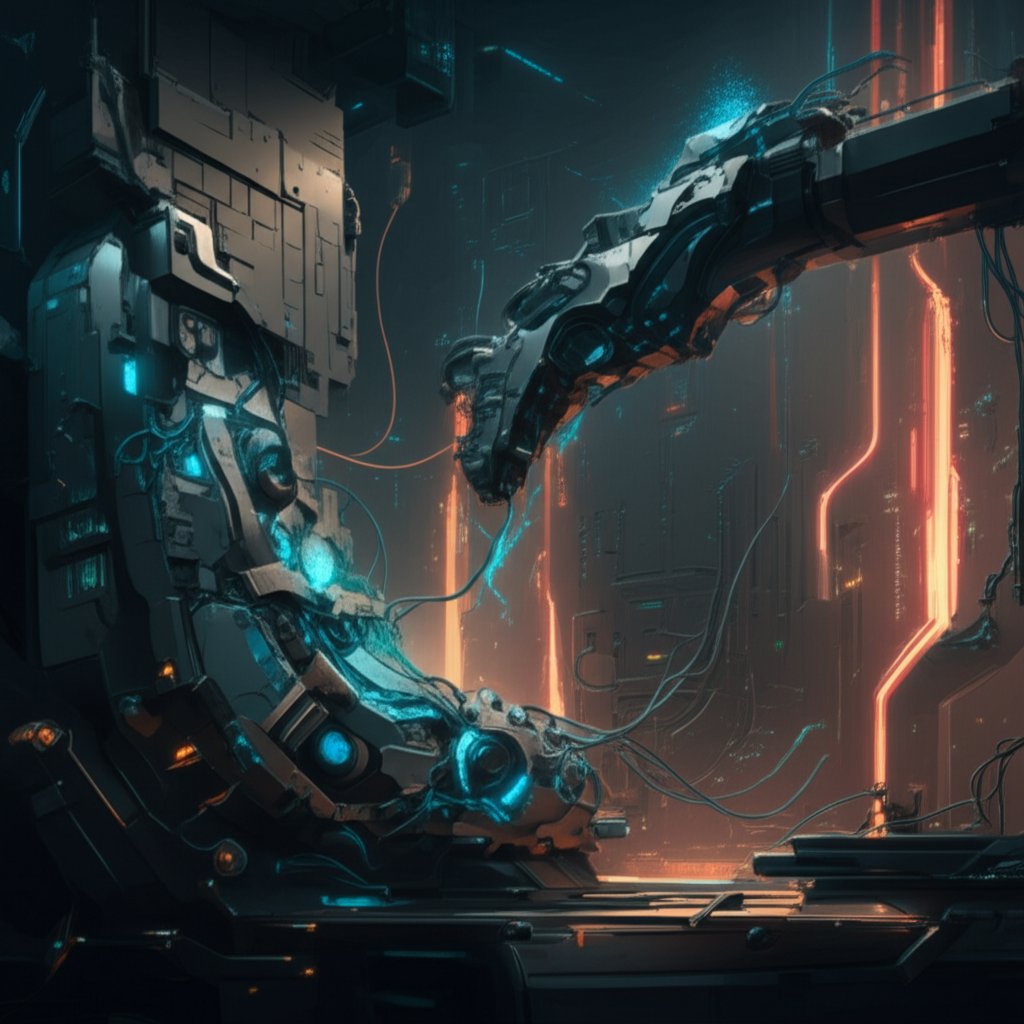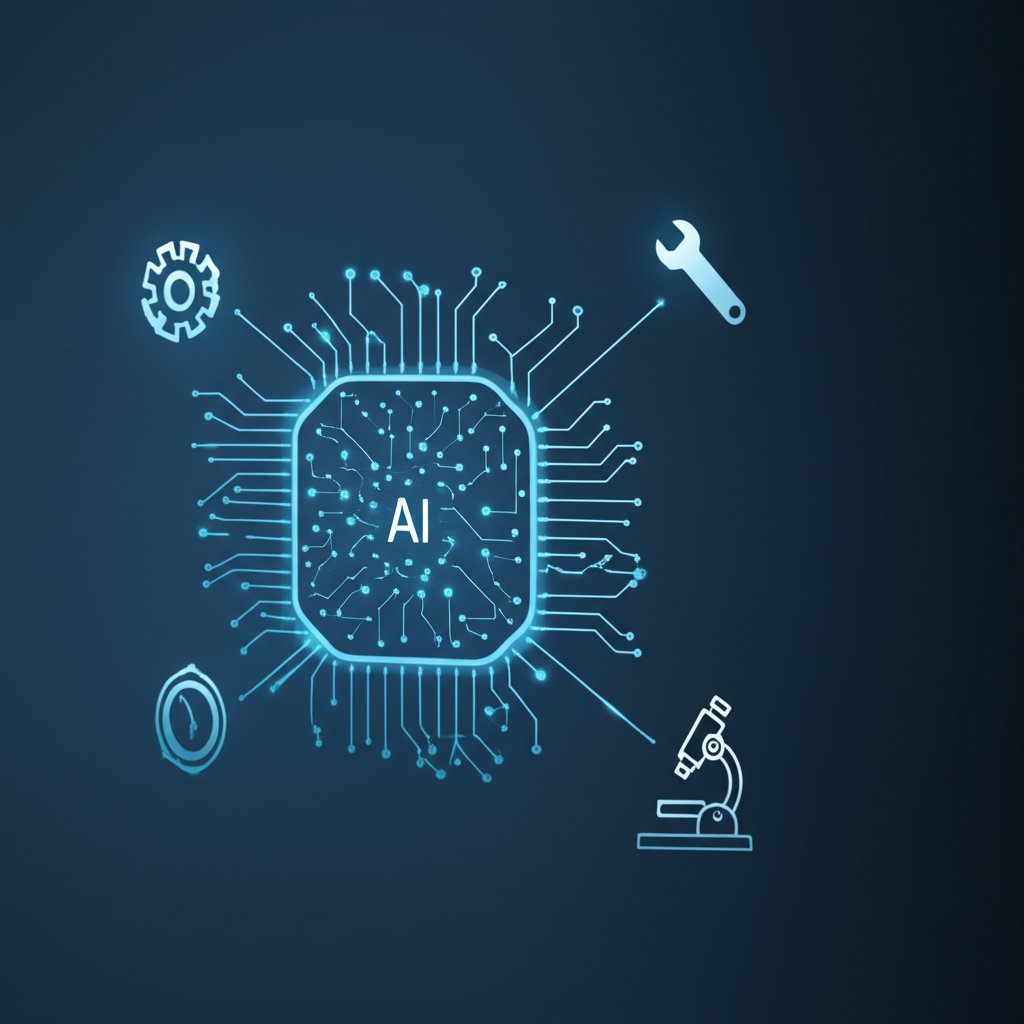The Future of Precision: AI in CNC Machining Services

TL;DR
Artificial intelligence (AI) is fundamentally transforming CNC machining services by integrating machine learning to automate complex processes, optimize toolpaths in real-time, and enable predictive maintenance. This technological leap significantly boosts productivity, enhances precision, and reduces operational costs. By analyzing vast datasets, AI is paving the way for a more efficient, reliable, and autonomous era in manufacturing, marking a pivotal shift toward Industry 4.0.
The Transformative Impact of AI on CNC Manufacturing
Artificial intelligence is no longer a futuristic concept in manufacturing; it is a present-day game-changer, especially within CNC machining. At its core, AI in this context refers to the use of intelligent algorithms and machine learning (ML) to enhance the capabilities of CNC machines beyond simple automation. While traditional CNC machines follow pre-programmed instructions, AI-powered systems can learn from data, adapt to new inputs, and improve their performance over time, creating a smarter and more dynamic production environment.
The primary mechanism behind this transformation is the ability of AI to process and analyze massive datasets in real-time. As detailed in insights from Morris Group, Inc., AI systems collect data from sensors during production to make immediate adjustments that boost efficiency. This shifts the operational paradigm from reactive to predictive. Instead of fixing problems after they occur, manufacturers can anticipate and prevent them. For instance, AI algorithms can forecast potential machine failures before they happen, allowing for proactive maintenance that minimizes costly downtime.
The benefits of this integration are substantial and multifaceted. A key advantage is the dramatic improvement in quality control. According to a 2023 Deloitte report mentioned by Dassault Systèmes, AI-powered quality control systems can reduce defect rates by up to 50%. This is achieved by analyzing sensor data to detect microscopic deviations that a human operator might miss, ensuring higher consistency and superior final products. This heightened precision is critical in industries like aerospace, medical, and automotive where tolerances are exceptionally tight.
Furthermore, AI enables continuous, 24/7 production by automating tasks that were once labor-intensive. As highlighted by China-Machining.com, AI-powered robots can work non-stop without fatigue, which is invaluable for mass production. This direct automation of repetitive tasks not only increases output but also creates a safer work environment by assigning dangerous operations to machines. As a result, human workers can focus on more strategic, value-added tasks that require creativity and critical thinking.

Key Applications: How AI is Actively Used in CNC Machining
The theoretical benefits of AI are being realized through several practical applications that are reshaping shop floors. From programming to maintenance, AI is introducing unprecedented levels of efficiency and intelligence into every stage of the CNC machining process. These applications demonstrate how AI is not just an add-on but a core component of modern manufacturing services.
One of the most impactful applications is in AI-powered Computer-Aided Manufacturing (CAM) software. As explained in a blog by Siemens, AI is revolutionizing CNC programming. Features like automated feature recognition use machine learning to identify geometries like holes and pockets in a 3D model and suggest optimal machining strategies. This drastically reduces manual programming time. Furthermore, AI copilots and chat interfaces are making CAM software more accessible, allowing programmers to use natural language prompts to generate toolpaths, effectively democratizing a once highly specialized skill. For example, Siemens has partnered with CloudNC to integrate CAM Assist into its NX CAM software, which automates the creation of complex machining strategies.
Predictive maintenance is another cornerstone application. By analyzing historical performance data and real-time sensor inputs, AI algorithms can accurately predict when a machine component is likely to fail. This allows maintenance to be scheduled proactively, preventing unexpected breakdowns that halt production. Research from McKinsey suggests that this approach can decrease maintenance costs by up to 25% and reduce unplanned downtime by as much as 40%, leading to significant operational savings and improved reliability.
The table below illustrates the practical shift from traditional methods to AI-driven processes:
| Process | Before AI (Traditional Method) | After AI (Intelligent Method) |
|---|---|---|
| Toolpath Generation | Manual programming, reliant on programmer experience; time-consuming. | Automated generation based on feature recognition; optimized for speed and tool life. |
| Quality Control | Manual or post-process inspection; reactive detection of defects. | Real-time monitoring with sensors; predictive and immediate correction of deviations. |
| Machine Maintenance | Scheduled or reactive (breakdown-based); leads to unnecessary downtime or failures. | Predictive maintenance based on data analysis; proactive servicing prevents failures. |
| Process Optimization | Based on static parameters and operator adjustments. | Real-time, dynamic adjustments to feeds and speeds based on live sensor data. |
These advanced capabilities are crucial for services focused on speed and precision. For companies looking to accelerate product development, leveraging a partner with expertise in these modern techniques is key. For instance, you can accelerate your product development with XTJ's comprehensive formative manufacturing services, your trusted partner for high-quality rapid prototypes. They provide integrated solutions that capitalize on advanced manufacturing for precision and efficiency.
The Future of CNC Machining: Industry 4.0, Automation, and Machine Learning
Looking ahead, the integration of AI in CNC machining is set to deepen, driving the industry further into the era of Industry 4.0. The future vision is one of a fully connected manufacturing ecosystem where processes are linked via cloud computing, enabling seamless data flow, AI-driven optimization, and automated diagnostics. This interconnectedness will allow for even greater levels of autonomy and intelligence on the factory floor.
A key trend shaping this future is generative design. As noted by Autodesk, generative design software uses AI to explore thousands of design permutations to create optimized parts that are lighter, stronger, and more efficient. This technology links directly into CNC machining processes, allowing for the automated production of highly complex and innovative components that would be difficult or impossible to design manually. This synergy between design and manufacturing will accelerate innovation and push the boundaries of what is possible.
However, the path to a fully autonomous factory is not without challenges. The implementation of advanced AI systems requires significant investment in technology and infrastructure. Furthermore, while AI can automate many tasks, the need for human expertise will not disappear. Instead, the role of the CNC machinist will evolve. Human operators will be essential for overseeing complex processes, managing AI systems, and providing the critical thinking and problem-solving skills needed to handle unforeseen issues and refine manufacturing strategies.
Ultimately, the integration of AI is a strategic necessity for any CNC machining service aiming to remain competitive. The continuous, automated optimization driven by machine learning will lead to systems with enhanced predictive capabilities and increasing autonomy. As we stand on the precipice of this new manufacturing era, embracing these transformative technologies is essential for driving innovation, efficiency, and growth in an increasingly digital world.





